The aftermath

After the fire, there were the ashes. After the fire, there was a bitter taste of destruction and loss, but also a renewed sense of purpose: that of rebuilding our beloved cathedral. As tragic as it was, the event marked the beginning of a human epic, the characters of which are destined to become builders of the 21st century. Hope mingled with sadness, and a new light shone on the future of Notre-Dame.
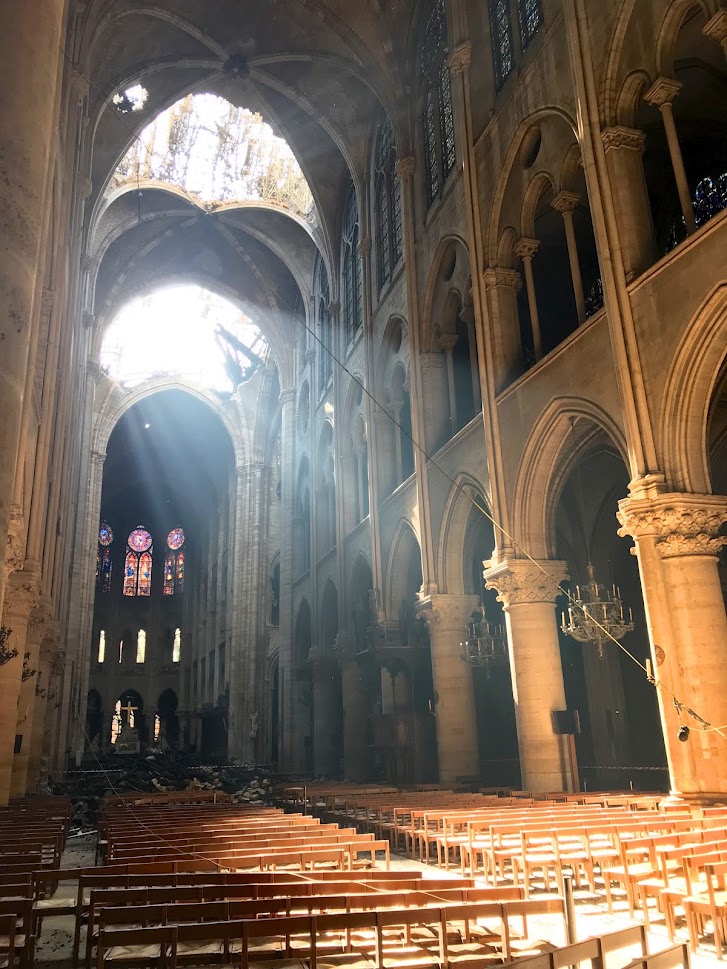
A heavy toll
On the morning of 16 April, an apocalyptic vision awaited the teams tasked with surveying the damage. As it collapsed, the 500 tons of wood and 250 tons of lead that made up the spire buried the transept crossing, as well as part of the nave, under the charred debris. The collapse also crushed the high altar and liturgical platform. The entire roof – as well as the oak frame from the Middle Ages – was lost. Deprived of its precious parts, Notre-Dame was bathed in sepulchral light, revealed by the brutal loss suffered a few hours earlier: an open-air cathedral, bearing the marks of inexpressible trauma.
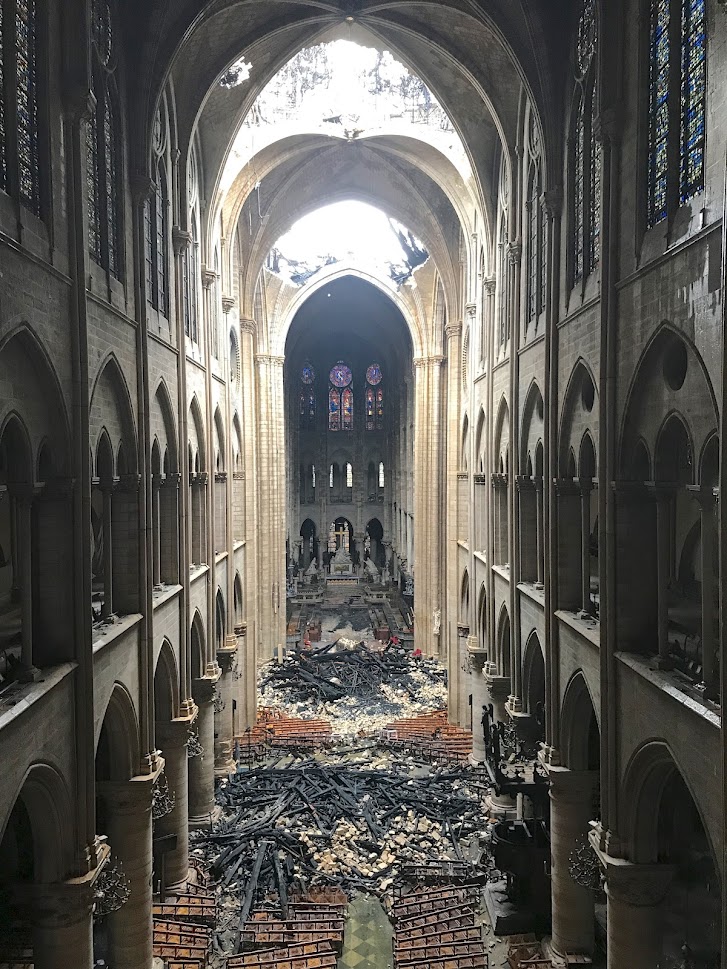
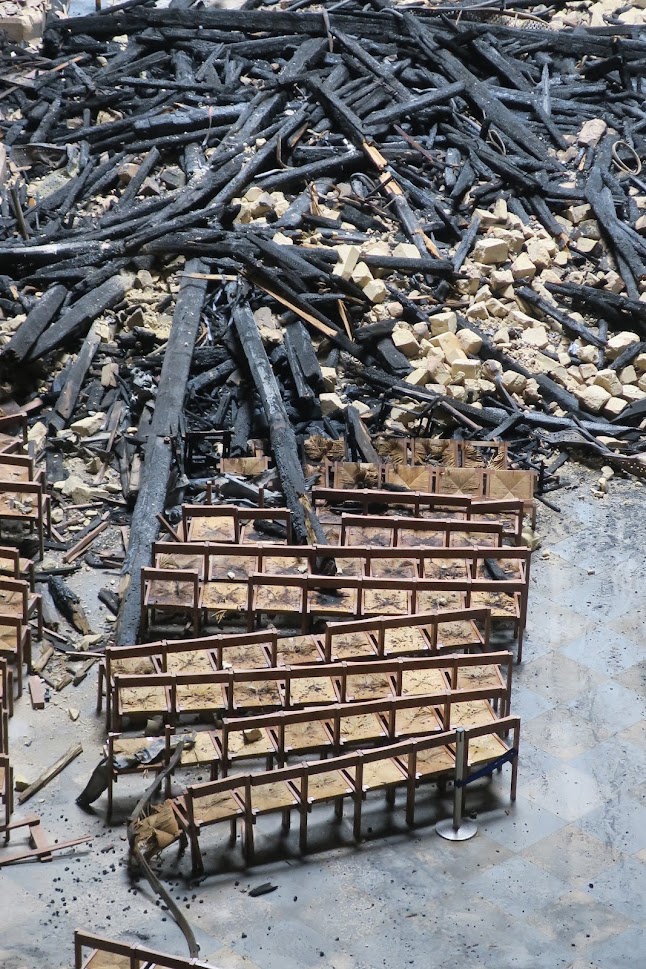
A few miracles
Despite considerable losses, the cathedral retained its structural integrity. Its towers, intact after the onslaught of the flames, testify to this in the most wonderful way. In addition to the statues of the spire, the fire also spared the great organ, the Cross of Glory and the medieval rose windows.
Of course, we were very concerned about the organ. When we found it was unharmed, it was an indescribable relief.
Yves Castagnet, titular organist of Notre-Dame
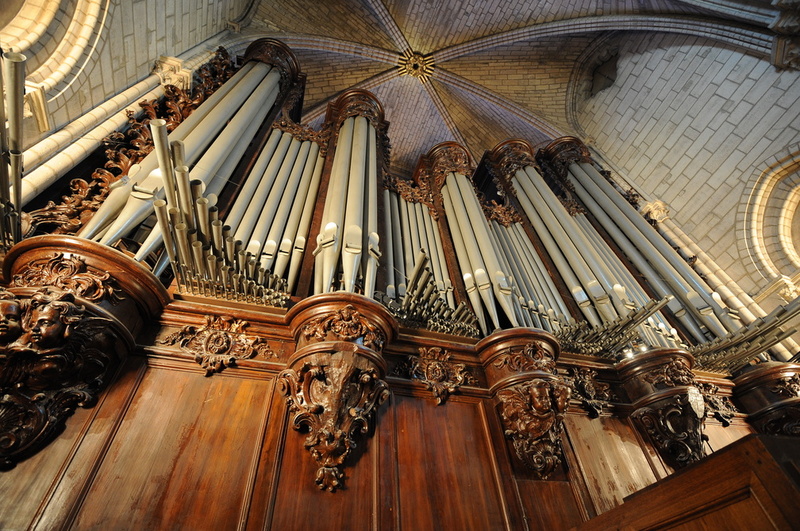
In addition, one of the teams’ priorities was to evacuate the major works of Notre-Dame, as well as its most precious relic, the Crown of Thorns. In accordance with the plan to safeguard the works, the general manager of the cathedral and the curators of Historic Monuments rushed in after the firefighters to save the Crown. The reliquary that housed it had to be destroyed in the operation.
The evening of the fire, in the heat of the moment, we found ourselves saving all the heritage items we could. I found myself putting a Nail of the Passion in my parka pocket, the Crown of Thorns, in its leather case, which I took under my arm… That day, these treasures were saved thanks to the courage and professionalism of the teams that swung into action.
Laurent Prades, general manager of Cathedral Notre-Dame
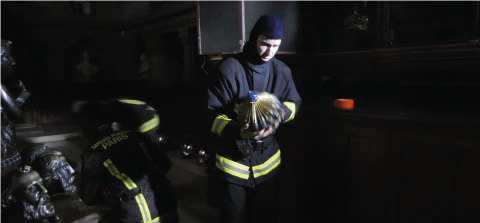
Lastly, the reliquary cockerel that stood atop the spire was found among the rubble, dented but restorable. An unexpected find which warmed people’s hearts the day after the tragedy.
The first operations
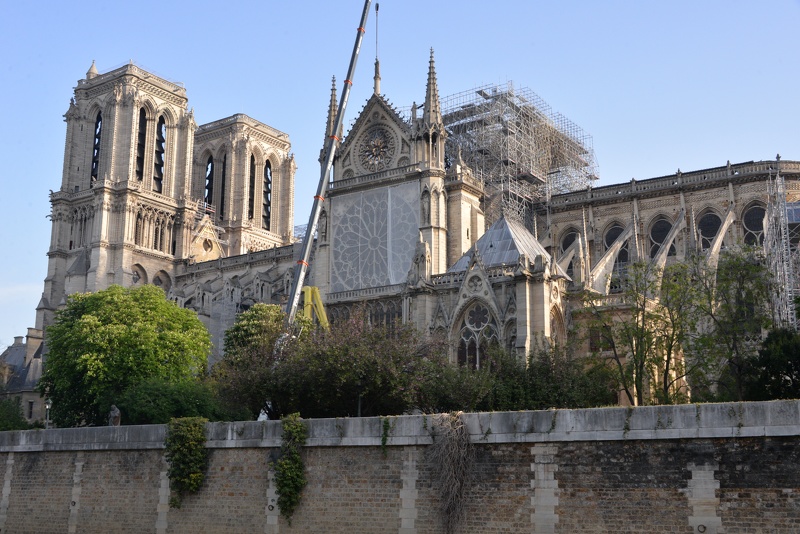
Once the fire was over, it was its consequences that worried the experts. Fire, collapses and water from the firefighters had weakened the delicate structure. To avoid a new collapse, it was imperative to shore up the most sensitive parts, in particular the gable which crowns the north transept and was threatening to fall inside the monument. The buttresses, as well as part of the vaults, had to be shored up to preserve the supports necessary for the whole structure. The scaffolding, charred by the flames, which obstructed the building with a forest of metal, also had to be removed. A plan to make it safe was quickly put in place by Philippe Villeneuve, assisted by Rémi Fromont and Pascal Prunet, chief architects of historical monuments, appointed to save the cathedral. Led, from December 2019, by the public establishment in charge of the conservation and restoration of Notre-Dame, the operations were also supported by the Fondation Notre Dame via the collection carried out among donors. Thanks to their action, and to all those involved in the construction site, the cathedral was now safe.
© Photos Marie-Christine Bertin, Trung Hieu Do – Diocèse de Paris